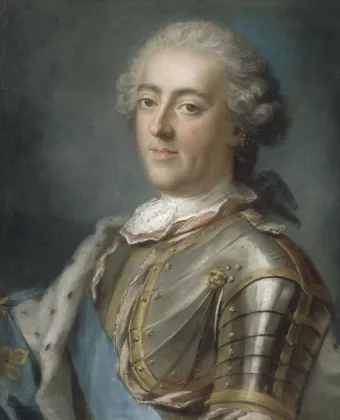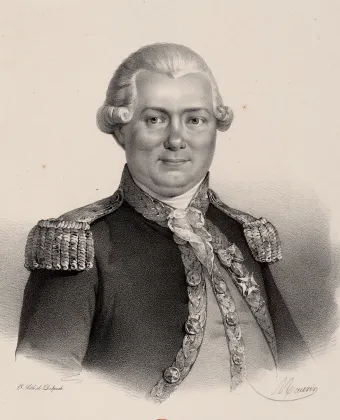Madame Royale, or “Mousseline” as she was dubbed by her mother, Queen Marie-Antoinette, was born at the Palace of Versailles in 1778 and christened in the royal chapel that same day. In 1793 her parents died at the guillotine during the Revolution. Marie-Thérèse Charlotte escaped execution but was imprisoned. In her jail cell the teenage Marie-Thérèse also learned of the deaths of her aunt, the king’s sister Madame Élisabeth, and her own brother Louis. In 1795 the Austrian army succeeded in negotiating her release, and the orphaned princess moved to the court of Emperor Francis II in Vienna.
ANECDOTE
Marie-Thérèse Charlotte was imprisoned but not executed. In her jail cell the teenage Marie-Thérèse learned of the deaths of her aunt, the king’s sister Madame Élisabeth, and her own brother Louis. In 1795 the Austrian army succeeded in negotiating her release, and the orphaned princess moved to the court of Emperor Francis II in Vienna.
In 1799, in Latvia, she married her cousin Louis Antoine d’Artois, son of Louis XVI’s younger brother (the future Charles X), and became Duchess of Angoulême. She was finally able to return to France when the monarchy was reinstated in 1814 and Louis XVIII, brother of Louis XVI, took the throne. Upon his death in 1824, his youngest brother Charles X took over and Louis Antoine d’Artois thus became Dauphin. After many long years in exile, Madame Royale was finally the Dauphine de France.
This uptick in fortunes was to be short-lived. The Revolution of 1830 ushered in the July Monarchy, propelling the Orleanist branch of the family to the throne in the person of King Louis Philippe I. The Duchess of Angoulême was a prominent legitimist, and once again went into exile beyond the borders of her beloved kingdom. After the death of Charles X in 1836 she became the rightful “Queen of France and Navarre” for the faction of legitimist royalists who continued to contest the authority of Louis-Philippe.
In 1851, two months before the coup d’état that overthrew the Second Republic and was led by President Louis-Napoléon Bonaparte, who declared himself Emperor Napoleon III, the Duchess of Angoulême died near Vienna. Having been an ardent defender of the monarchy against Napoleon Bonaparte in 1815, she would not live to see the second incarnation of the Empire under the leadership of his nephew.















